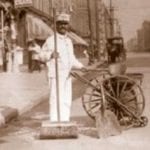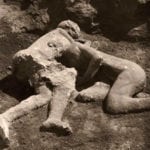 Weird Stuff
Weird Stuff  Weird Stuff
Weird Stuff  Mysteries
Mysteries 10 Tragic Disappearances and Deaths in Joshua Tree National Park
 History
History 10 Ways Childhood Really Sucked in the Old West
 Music
Music 10 Name Origins of Famous Bands from the 1990s
 Religion
Religion 10 Biggest Turnarounds by the Catholic Church
 Weird Stuff
Weird Stuff 10 Unbelievable Times Laws Had Unintended Consequences
 Humans
Humans Ten Historic Women Who Deserve Way More Credit Than They Got
 Movies and TV
Movies and TV 10 Films That Spawned Major Lawsuits
 History
History Ten Times Towns Were Wiped Off the Face of the Earth
 Creepy
Creepy 10 of the Most Disturbingly Haunted Public Houses in the UK
 Weird Stuff
Weird Stuff 10 Niche Subcultures That Are More Popular Than You Might Think
 Mysteries
Mysteries 10 Tragic Disappearances and Deaths in Joshua Tree National Park
 History
History 10 Ways Childhood Really Sucked in the Old West
Who's Behind Listverse?

Jamie Frater
Head Editor
Jamie founded Listverse due to an insatiable desire to share fascinating, obscure, and bizarre facts. He has been a guest speaker on numerous national radio and television stations and is a five time published author.
More About Us Music
Music 10 Name Origins of Famous Bands from the 1990s
 Religion
Religion 10 Biggest Turnarounds by the Catholic Church
 Weird Stuff
Weird Stuff 10 Unbelievable Times Laws Had Unintended Consequences
 Humans
Humans Ten Historic Women Who Deserve Way More Credit Than They Got
 Movies and TV
Movies and TV 10 Films That Spawned Major Lawsuits
 History
History Ten Times Towns Were Wiped Off the Face of the Earth
 Creepy
Creepy 10 of the Most Disturbingly Haunted Public Houses in the UK
Top 10 Triumphs Of Western Civilization
Let’s face it: 2020 has been fairly miserable thus far. The only thing that seems to knock a lethal pandemic from world headlines are riots and looting amid protests against police brutality.
We need some positivity right now – a reminder of Western Civilization’s myriad accomplishments to counteract our current rough patch.
Top 10 Reasons We Should Revive the Dark Ages
Engineering, science, literature, commerce. We’ve done some amazing things, my friends. Hold your heads up high and enjoy the following historical highlight reel. Here’s to the brilliant men and women of history who crafted the greatest civilization the earth has ever known.
10 Plumbing
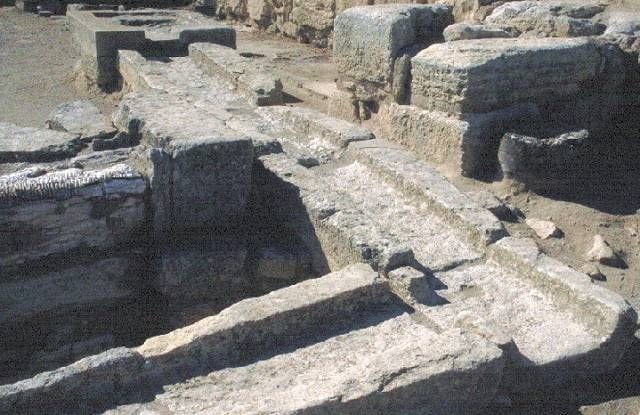
… is a weird way to start this list. Weird, but incredibly important. You can’t build cities without a water supply, and you can’t build livable cities without a supply of clean water and the ability to wash away human waste.
The first intricate system of underground pipes was developed around the 18th Century B.C. by the Minoan civilization in modern-day Crete. Their capital city, Knossos, had a two-way plumbing system that supplied water and provided sanitation, and also incorporated storm sewage canals to prevent flooding (and disgusting backups) during heavy rains.
Remarkably considering its early date, the Minoans also had the first known flush toilets[1] – ground-floor latrines with overhead water containers. Some palaces even had rudimentary inverted siphon systems[2] complete with glass-covered clay pipes, that were found in working condition some 3,000 years later. How’s that for craftsmanship?
Other Western cultures were plumbing pioneers as well. Ancient Greeks in Athens employed an indoor pipe system that, among other perks, permitted pressurized showers. Later, in the First Century A.D., the Greek inventor Heron used pressurized piping for firefighting purposes in the city of Alexandria.
9 Coins as Common Currency
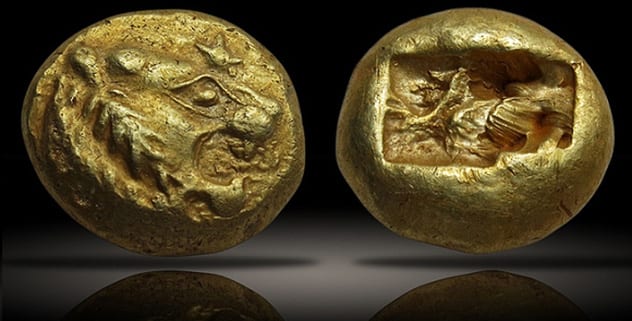
A significant stride in the history of world commerce came when it was no longer necessary to barter or haggle over unofficial units of currencies that only a segment of the populace recognized as legitimate.
Though a uniform currency is so clearly advantageous a concept that numerous civilizations undoubtedly pined for its inception, incorporating an acceptable monetary unit is easier said than done. For starters, it takes stability: for currency to be universally considered such, it must be issued by a recognized governing authority, to distinguish it from the various tokens, barter chips or other casual currencies exchanged nearly since the dawn of mankind.
The vehicle is just as important and, here, metal coins meet a number of prerequisites. Besides being difficult to counterfeit, metal coins can confer value both representatively (i.e. value backed by a governing body) and physically (i.e. by being composed of some percentage of precious metal, such as gold or silver). Coins also are both portable and non-perishable.
While the promise of coins as official currency was likely apparent for millennia, the first one to check all these boxes was the Lydian Stater.[3] Introduced sometime in the late 7th Century B.C., they were made from an impressively consistent mix of 55% gold, 45% silver, and a small amount of copper for durability’s sake.
It was, in part, invention by necessity: Ancient Lydia was a mercantile center of trade occupying modern-day western Turkey, including the incredibly well-preserved port city of Ephesus.[4] Conquered by Alexander the Great, it was absorbed into the Seleucid Empire in the 4th Century B.C., its contributions to human history well intact despite the military defeat. In 133 BC it was incorporated into the Roman Empire.
8 Proliferation of Democracy
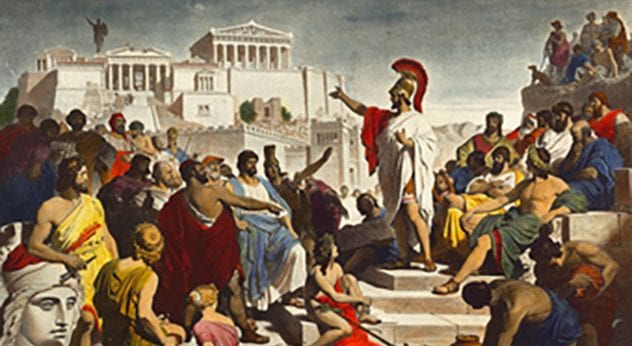
The practice of citizens taking a widespread role in determining their own governance has roots in ancient Greece. In fact, the word “democracy” derives from the Greek words for people (demos) and rule (kratos).
While prior civilizations likely provided citizens at least some say in who wielded authority over them, a formal, more mature form of self-government developed in Greece sometime around the late 6th or early 5th Century B.C.[5] Ancient Greek democracy comprised the Ekklesia, who wrote laws and dictated foreign policy; the Boule, representatives from the ten Athenian tribes; and the Dikasteria, public courts where citizens debated before a group of lottery-selected jurors.
The Boule in particularly was refreshingly random: Each year, 500 names were chosen from the entirety of Athens’ citizenry to serve for one year, during which time they proposed new laws and oversaw various aspects of the political process. Unlike modern representative democracies, laws in ancient Greece were voted on by citizens themselves, known as “direct democracy.” When a new law was proposed, all citizens had the opportunity to vote on it by attending an assembly, using shards of pottery called ostraka as ballots.[6]
Though Ancient Greek democracy bore little logistical resemblance to today’s representative governments, the goals were similar: allowing people a voice in the laws by which they must abide was a stabilizing force that gave society a citizenry-backed legitimacy. Regular elections gave satisfaction to those who voted for items that were adopted, and hope for those who felt differently. The process also limited any one person’s power and encouraged the peaceful transfer of governing authority.
7 Ancient Classical Literature
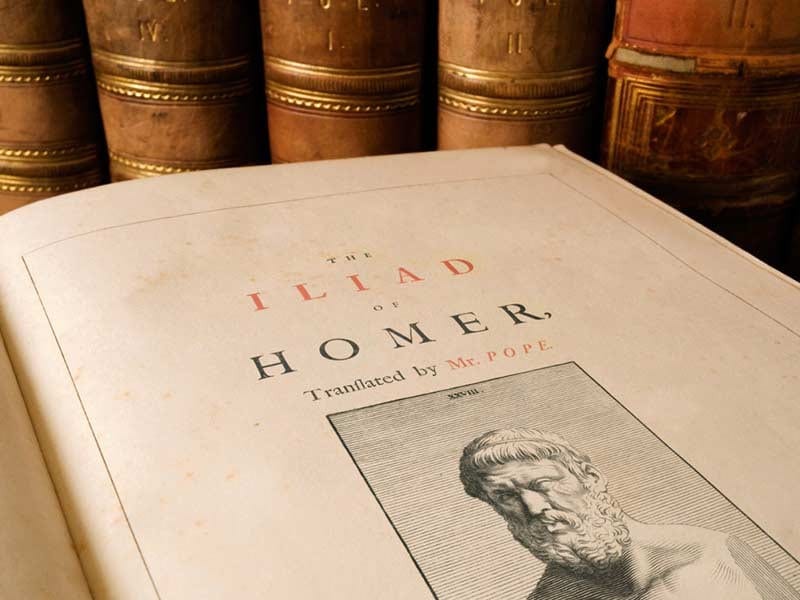
Fully explaining the contributions of ancient classical literature would take 250 lists rather than 250 words, so let’s just touch upon what it means to us, right now, in the 21st Century.
Besides contributing mightily to various contemporary literary and cinematic motifs – dramas, hero journeys, comedies – ancient Greek and Roman literature showcases that the vast majority of today’s issues were prominent in life well over two millennia ago. If you’re ever feeling tragically unique, try picking up a Greek tragedy.
Take Medea, for instance (not the Tyler Perry one,[7] the ancient Greek one[8]). Readers are left to interpret whether the title character was a ruthless murderer who poisoned a king and slaughtered her own children in cold blood… or a scorned fiancé who took the only viable option she saw available to her. At its heart, it’s a tale of female powerlessness with deadly consequences.
Taking umbrage with the government? So did Sophocles’ Antigone, who buried her brother, Polynices, against the wishes of a king who deemed him a traitor. When caught, Antigone claims the superiority of divine right over human law. Her reward is a sentence to be buried alive.
No justice, no resting in peace – for anyone. The king changes his mind too late, as Antigone hangs herself before the sentence can be carried out. The king’s son, who’d fallen in love with her, also commits suicide – as does his mother, when she learns of her son’s fate. Antigone brings the house down with herself, an example of courage and admirable civil disobedience.
The list goes on. Thumbing through the classics is a reassuring, humbling reminder that today’s struggles were also yesteryear’s. Oppression, love, betrayal, misogyny… all right there for the reading.
6 Scholasticism & Scientific Method
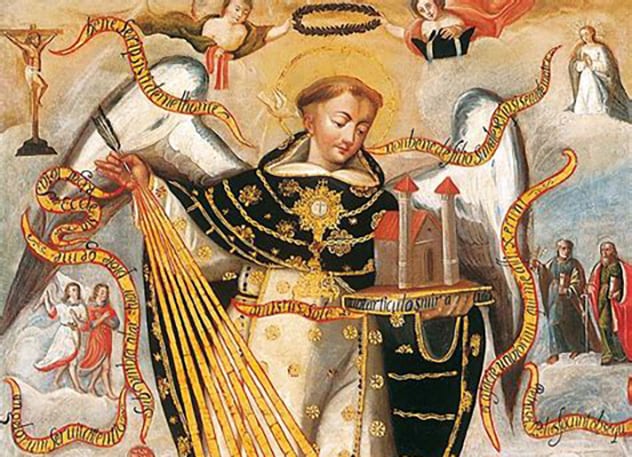
No one, of course, can claim to have invented reasoning. But what Western Civilization spearheaded was its formality – ground rules for scientific progress to dispel deeply established yet unproven ideas, and to stand on the shoulders of previous breakthroughs.
Scholasticism[9] essentially added structure to brainstorming, emphasizing the use of reason in exploring questions of both philosophy and theology. In the 13th Century a student of this practice, Saint Albertus Magnus (Saint Albert the Great), called for distinguishing revealed truth (revelation of something unknown through a divine power) from experimental science. Though scholasticism itself was inextricably tied to Church doctrine, this helped provide a modicum of healthy distance between reason and religion, and was an essential component of the transition into to the Renaissance.
Along with student St Thomas Aquinas, Magnus made many scientific observations in astronomy, chemistry, geography and physiology. Another 13th Century peer, Roger Bacon, called for an end to blanket acceptance of preconceived notions, even widely held convictions passed down from such influential ancient minds as Aristotle.
Three centuries later, in 1621, a distant relative of Bacon’s, Francis Bacon, published Novum Organum. The text advocated inductive reasoning as a necessary foundation for scientific thinking. Bacon’s approach consisted of three primary steps,[10] starting with a plain description of the facts under examination. Those facts are then classified into three categories – instances of its presence (or correctness), instances of its absence (or incorrectness), and instances of its presence in varying degrees (or circumstantial correctness).
From there, an educated conclusion can be drawn about, for example, cause and effect. Bacon’s guidelines set the stage for the modern scientific method,[11] used to construct and test hypothesis to determine their validity.
Top 10 Myths About The Middle Ages
5 The Printing Press and Mass Literacy
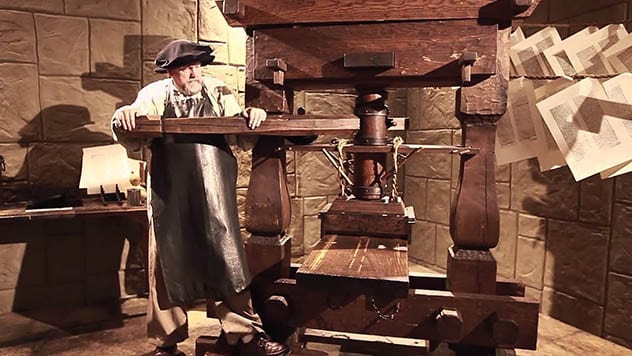
For expansion of human knowledge, the year 1440 may be the most significant demarcation line in the history of mankind. That was the year that Germany native Johannes Gutenberg invented a printing press capable of mass-producing books. (While other presses existed as early as the 3rd Century A.D., Gutenberg’s was the first dedicated to books specifically.)
Before the Gutenberg Press, manufacturing copies of books was an arduous, painstaking by-hand process. Books were therefore both limited and expensive and, because of that, only 30% of Europe’s adults could read by the mid-15th Century. Some places were even worse off: barely 10% of Italians could read Dante’s Divine Comedy upon its publication in 1321. What good are the classics if only one in 10 people can enjoy them?
The Gutenberg Press changed both the economics and availability of books, flooding the market. Literacy rates rose significantly, and the European Renaissance that had begun about a century earlier kicked into overdrive.
“What had been a project to educate only the few wealthiest elite in this society could now become a project to put a library in every medium-sized town,” explains historian Ada Palmer.[12]
Just as importantly, the press accelerated the pace of advanced education,[13] allowing knowledge to be shared on a far broader scale than individual teachers could accomplish. It also changed the instruction process itself – especially with technical subjects. Suddenly, complex engineering diagrams, mathematical charts and architectural works could be replicated with vastly increased accuracy and efficiency.
4 Circumnavigation
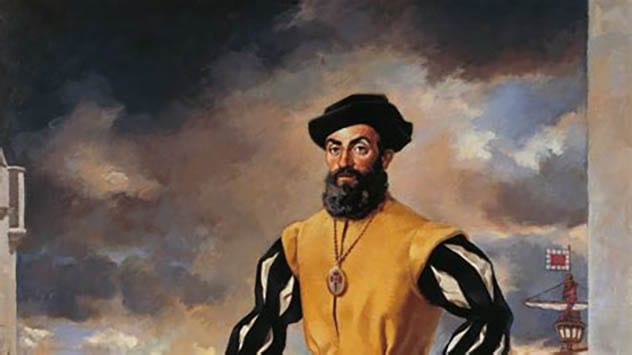
Naval exploration dates back tens of thousands of years. Many archaeologists consider the first broad-scale seafarers to be the original inhabitants of Australia, some 60,000 years ago.[14] Polynesians settling Pacific Islands, far-flung Roman Empire water routes and, of course, the oceanic discovery of the New World – first by Nordic explorers and eventually by Columbus – followed.
But no one in recorded history had done something vital to understanding world geography: sailed around the whole of planet Earth.
That began to change exactly 501 years ago, when Ferdinand Magellan[15] set sail from Spain with five ships, with the goal of finding a faster commerce route to the East Indies.
He didn’t find it. What he did discover, eventually, was a narrow waterway at the southern tip of South America that connected two oceans. Emerging from what is now known as the Strait of Magellan, the explorer marveled at the ocean’s comparable calmness, giving the Pacific – or “peaceful” – Ocean its name.
Magellan never made it all the way back to Spain; in April of 1521 he was killed in a fight with natives in the Philippines. In fact, only one of the original five vessels – the Victoria[16] – made it back to Spain the following year.
Though they hadn’t found a viable trade route, Magellan’s team had answered an age-old cartographer’s conundrum: how big, exactly, was the world? Magellan’s journey is another demarcation line of human knowledge, allowing for all transportation decisions made thereafter to be holistically informed ones.
3 Aeronautics: To the Moon and Beyond
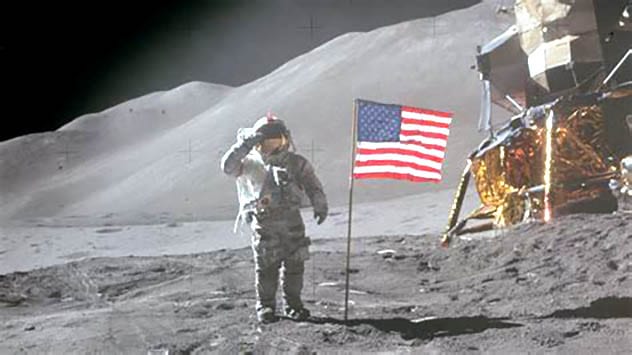
In 1784, a fascinated Benjamin Franklin and a stereotypically skeptical John Adams were on hand in Paris (they were there to sign the treaty that ended the American Revolution) to witness two Frenchmen make history: Marquis d’Arlandes and Pilatre de Rozier became the first to slip the surly bonds of Earth, courtesy of a hot-air balloon.[17]
The delicate 70-foot-tall contraption, precariously comprised of linen and varnished paper with hot air provided by burning straw (fire hazard much?), soared as high as 3,000 feet before touching down five miles away. “Aeronauts,”‘ as they were called, became instant heroes, with balloon motifs adorning everything fashions to furniture: inflated dresses,[18] balloon fans, powder boxes, chandeliers, needlepoint chairs.
Though it took more than a century, Western civilization also made the next giant leap into the skies, when Wilbur and Orville Wright constructed the first successful airplane in 1903.[19] Though initially rudimentary, Western engineering advanced aeronautics exceptionally fast – quick enough for both sides to strafe and bomb each other in the Great War little more than a decade later.
And then, 50 years later, the unthinkable: a man on the moon. All cynicism aside, take a moment and let it sink in that just 66 years after the first airplane flight, Western civilization flew people to the moon, allowed them to get out and bounce around, and brought them back alive. The achievement was so historic that “Men Walk on Moon”[20] became the largest font size (96 pt.) ever to grace the front page of the conventionally low-key New York Times. The font has been used just three times since, with:
NIXON RESIGNS
U.S. ATTACKED, and
OBAMA[21]
2 The Factory Production Line
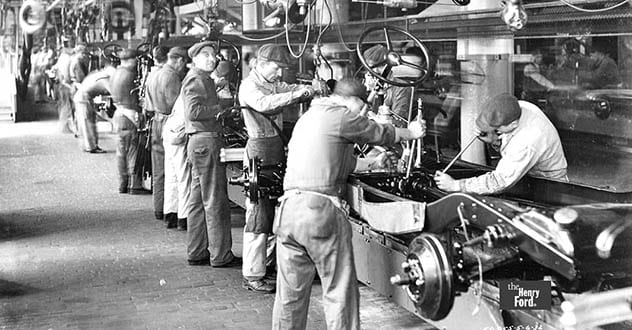
In December 1913, Henry Ford introduced the first moving assembly line in history. The exercise in streamlining centered around the idea that a worker can accomplish the same action repeatedly far more expediently than a variety of disparate actions in succession.
The change resulted in one of the greatest exponential labor efficiency improvements ever: the time it took to build one of Ford’s signature Model T automobiles was reduced from over 12 hours to two hours and 30 minutes, a nearly five-fold decrease.[22]
Crucially, Ford’s production line greatly expanded middle-class access to cars, which were quickly morphing from wealthy status symbol to must-have mode of transportation. By reducing the time, capital investment and manpower needed to build the Model T, Ford could drop its price from $850 to under $300. In this fashion, mass production led to mass consumption – turning millions into drivers and Ford into a billionaire.
A decade later, the production line led to another innovation: the five-day, 40-hour workweek. The efficiency created by assembly belts and personnel customization made manufacturing so fast and easy that longer hours and six-day workweeks were no longer necessary to meet demand and turn handsome profits; this held true even though Ford had more than doubled salaries in 1914 to a then-impressive $5 per day.[23] The production line, then, ushered in a new era of work-life balance still a hallmark of healthy middle class lifestyles.
1 Christianity
Christendom: it’s an old term that covers much of the western world (and some parts beyond). It is on this list at position one for a very good reason: despite the fact that there have been some dark times that Christianity may have contributed to, on the whole, the western world as we know it exists today thank to the efforts of medieval monks and scholars, and Christian people of good will.[24] The so-called dark ages were a time in which monks were secreted away in cold frowsty monasteries working tirelessly to maintain all of the wisdom of the ancient world in the form of illuminated manuscripts.
Additionally, thanks to convents and the sisters within, the female voice was saved for posterity. In the 16th century the only defender of women seemed to be the popes who refused to allow King Henry to simply cast off any wife he wanted. And without the astonishingly important contributions of the likes of the the humble St Claire of Assisi, Polymath Saint Hildegard von Bingen, and doctor of the Church Saint Teresa of Ávila the world would be a different place today. Saint Hildegard’s impact on European society in her time was immense; she should be a household name. Some of her music is in the video clip above.
Art, music, literature, social justice, manners and so many other parts of our society exist in the form we know them today thanks to the impact of Christianity on the governments of western society. The world is in upheaval right now, so it seems fitting to end this list with a quote from the Bible that, above all else, is important for us to remember today: “All things therefore whatsoever you would that men should do to you, do you also to them.” (St Matthew 7:12)[25]
Top 10 Misconceptions About The Catholic Church
About The Author: Christopher Dale (@ChrisDaleWriter) writes on politics, society and sobriety issues. His work has appeared in Daily Beast, NY Daily News, NY Post and Parents.com, among other outlets.
